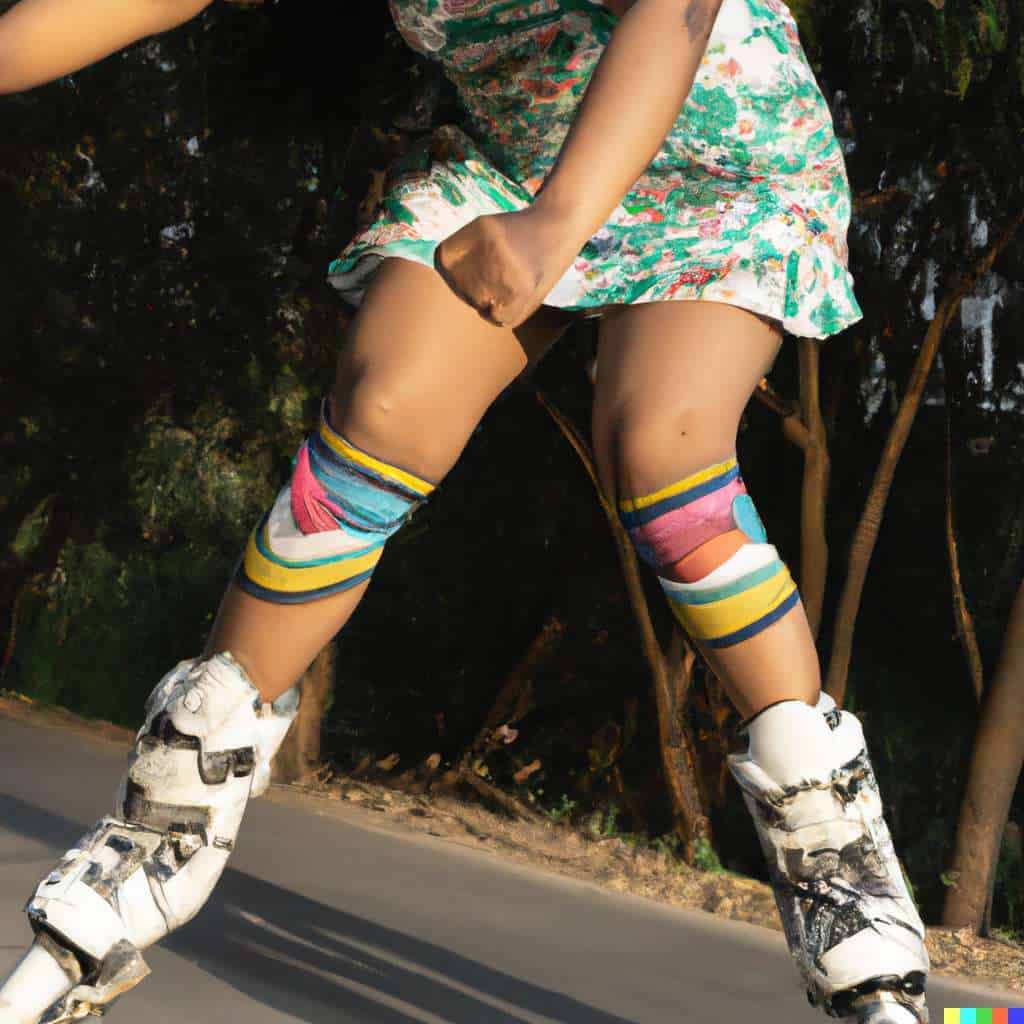Table of Contents
If you’re new to rollerblading you going to need to know how to make your rollerblades more comfortable. Just like new shoes, you don’t want them pesky blisters.
In this article, we’ll cover the basics such as getting fitted for the right rollerblades and adjusting your skates to fit you properly as well as more advanced tips like warming up before you start skating and taking breaks during long sessions.
Key Takeaways: Making Your Rollerblades More Comfortable
- Proper Fit is Essential: Measure your feet accurately to find rollerblades that fit well to avoid discomfort, blisters, and injuries. Use a fitting service if buying in person and remember to wear the socks you plan to skate in when trying on rollerblades.
- Adjust for a Perfect Fit: Ensure your rollerblades are adjustable for a snug fit. Fine-tuning straps and buckles can make a significant difference in comfort and performance.
- Select the Right Apparel: Opt for clothes that are close-fitting and made from lightweight materials to facilitate movement and reduce the risk of accidents.
- Warm-Up and Cool Down: Engage in light cardio and stretching before and after skating to prevent injuries and reduce muscle soreness.
- Take Regular Breaks: During long skating sessions, taking breaks every 30 minutes can help avoid fatigue and dehydration, enhancing overall skating comfort.
- Invest in Quality Padding: Adequate padding, especially for knees and elbows, is crucial for beginners to prevent injuries and improve comfort while learning.
- Consider Arch Supports: For additional balance and to reduce foot fatigue, consider using arch supports, especially if you’re prone to foot pain or have specific conditions like plantar fasciitis.
- Prevent Blisters and Chafing: Ensure your rollerblades fit well, wear thick socks, warm up properly, and take breaks to minimize the risk of blisters and chafing.
- Understand Discomfort Causes: Uncomfortable rollerblades could be due to poor fit, improper adjustment, wear and tear, or just the adjustment period for new skaters.
- Choose Beginner-Friendly Models: In 2024, there are many rollerblade options designed specifically for beginners, focusing on comfort and ease of use to encourage learning and enjoyment.
BODYPROX Knee Pads Elbow Pads Wrist Guards Set for Inline Skating, Skateboarding, Roller Derby, BMX Ride, and Rollerblading.
(as of 07/25/2024 14:17 GMT +01:00 - More infoProduct prices and availability are accurate as of the date/time indicated and are subject to change. Any price and availability information displayed on [relevant Amazon Site(s), as applicable] at the time of purchase will apply to the purchase of this product.)Get fitted for the right rollerblades
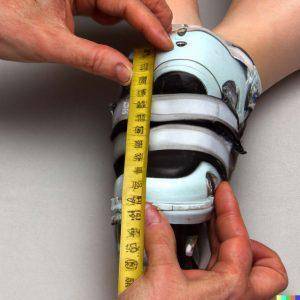
When it comes to rollerblading, having the right equipment is key to a comfortable and enjoyable experience. One of the most important things to consider is the fit of your rollerblades.
If they are too small or too big, you will likely have discomfort and pain throughout your skating session.
Trust me on this, from years of a hand-me-down from older siblings, there is nothing like having your own well-fitted skates.
You will need to measure your foot to get fitted for the right rollerblades. You can do this by tracing your foot on a piece of paper and then measuring the length and width.
Once you have these measurements, you can use them to find the size of rollerblades that will fit you best. This is especially important if you’re buying online.
Most rollerblade retailers offer a fitting service, so be sure to take advantage of this if you’re not sure what size to get. Rollerblades that are too tight can cause blisters and soreness, while rollerblades that are too loose can lead to ankle and knee injuries.
When trying on rollerblades, be sure to wear the same type of socks that you plan on skating in. Also, make sure that there is at least one centimetre of space between your toes and the front of the rollerblades.
It’s also important to adjust your skates correctly so that they fit your feet properly. Most skates come with adjustable straps that can be tightened or loosened depending on your foot size.
Be sure to test out different settings until you find the perfect fit.
BODYPROX Knee Pads Elbow Pads Wrist Guards Set for Inline Skating, Skateboarding, Roller Derby, BMX Ride, and Rollerblading.
(as of 07/25/2024 14:17 GMT +01:00 - More infoProduct prices and availability are accurate as of the date/time indicated and are subject to change. Any price and availability information displayed on [relevant Amazon Site(s), as applicable] at the time of purchase will apply to the purchase of this product.)Wear the right clothes
When you go rollerblading, it’s important to wear clothes that will allow you to move easily. avoid baggy clothes, as they can get in the way and make it difficult to skate.
Instead, choose clothes that fit close to your body and are made from a lightweight material.
Shorts or pants that are made from a stretchy fabric are also a good choice, as they will provide flexibility and comfort.
Adjust your rollerblades to fit you properly
First, you need to check if your rollerblades are adjustable check with the manufacturer to ensure this is safe to do. there are some great online videos showing what adjustments can be made
Warm up before you start skating
It’s important to warm up before you start skating, especially if you’re new to rollerblading. A good warm-up can help prevent injuries and make your skating experience more comfortable.
Warm up by doing some light cardio-like jogging or jumping rope for 5-10 minutes. Then do a few basic stretches, focusing on the muscles you’ll be using while skating.
Finally, spend a few minutes practising simple skating moves to get your body used to the motion.
Take breaks during long skating sessions
Rollerblading can be pretty taxing on your body if you’re not used to it. It’s important to take breaks during long skating sessions, especially if you’re not in great shape.
- Drink plenty of water – This is probably the most important thing to remember when it comes to taking breaks. Dehydration can quickly lead to fatigue, so make sure you drink plenty of water before, during, and after your skating session.
- Take a break every 30 minutes – If you’re not in great shape, try to take a break every 30 minutes or so. This will give your body a chance to rest and refuel.
- Stretch – Stretching is another important way to avoid fatigue while rollerblading. Make sure to stretch your legs, arms, and back before and after your session.
2PM SPORTS Vinal Girls Adjustable Flashing Inline Skates, All Wheels Light Up, Fun Illuminating Skates for Kids and Men
(as of 07/25/2024 14:17 GMT +01:00 - More infoProduct prices and availability are accurate as of the date/time indicated and are subject to change. Any price and availability information displayed on [relevant Amazon Site(s), as applicable] at the time of purchase will apply to the purchase of this product.)Stretch after you’re done skating
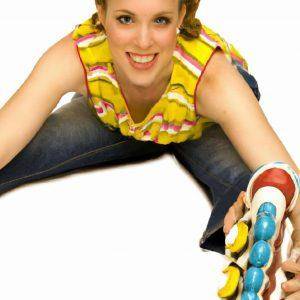
When you’re done skating, it’s important to stretch out your muscles. This will help keep you from getting injured and make you less sore the next day.
There are plenty of great stretches you can do, but here are a few of our favourites:
– Hamstring stretch: Sit on the floor with your legs straight out in front of you. Bend forward at the waist and reach for your toes. Hold this position for 30 seconds.
– Quadriceps stretch: Stand with your feet shoulder-width apart. Reach one hand down to touch your ankle while keeping your back straight. Hold this position for 30 seconds, then switch sides.
– Calf stretch: Place one foot in front of the other, with your back leg bent. Keeping your heel on the ground, push down into the front foot and hold for 30 seconds. Switch legs and repeat.
Invest in some good quality padding for rollerblading
Investing in some good-quality padding for rollerblading is a must if you are a beginner.
There are a few different types of padding that you can buy, so be sure to do your research and find the right option for you.
Some pads are designed specifically for the knees and elbows, while others offer full-body coverage.
No matter what type of padding you choose, make sure that it is comfortable and fits well. You don’t want it to move around or bunch up while you’re skating.
Triple Eight Saver Series Pad Set with Kneesavers, Elbowsavers and Wristsavers
(as of 07/25/2024 14:17 GMT +01:00 - More infoProduct prices and availability are accurate as of the date/time indicated and are subject to change. Any price and availability information displayed on [relevant Amazon Site(s), as applicable] at the time of purchase will apply to the purchase of this product.)Arch Support for Rollerblades
While foot arch supports are not required for skating, they can provide a number of benefits.
For one, they can help to improve your balance and stability. In addition, they can help to reduce foot fatigue and discomfort, allowing you to skate for longer periods of time.
Arch supports can also help to prevent foot injuries, making them an especially good choice for beginner skaters.
While there are a number of different arch support options available, it is important to choose one that provides the right level of support for your foot type. With the right arch support, you will be able to enjoy all the benefits of skating without having to worry about foot pain or injury.
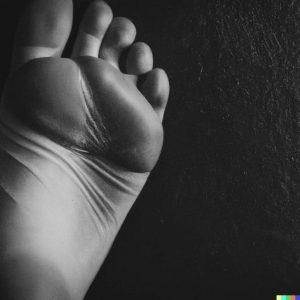
Rollerblading Plantar Fasciitis
If you’re experiencing pain in the bottom of your feet while rollerblading, it’s possible that you have plantar fasciitis.
This condition occurs when the plantar fascia, the connective tissue that runs along the bottom of the foot, becomes inflamed.
Symptoms include sharp pain in the heel or arch of the foot, pain that is worse in the morning or after prolonged standing, and pain that improves with stretching or massage.
How to Prevent Blisters and Chafing when Roller Skating
If you’re new to roller skating, you might be wondering how to prevent blisters and chafing. Here are a few tips to help you avoid these common problems:
- Wear properly fitting skates Blisters are often caused by skates that are too tight or too loose. Make sure your skates fit snugly but comfortably and that there is no extra space in the toe area.
- Choose the right socks. Wearing socks that are too thin can increase your risk of blisters, so it’s important to choose a thicker pair that will provide more cushioning.
- Warm up before skating. Warming up your muscles before skating will help prevent blisters and chafing by increasing blood flow to the area.
- Take breaks. If you’re skating for an extended period of time, be sure to take breaks every so often to give your feet a rest.
- If your roller skates hurt the side of your foot, ensure the laces are tightened properly.
By following these tips, you can help prevent blisters and chafing when roller skating.
SULIFEEL Rainbow Unicorn Knee Pads for Kids Knee Elbow Pads Wrist Guards with Drawstring Bag Adjustable Protective Gear Set for Girls Roller Skating Bike Cycling Skateboard Scooter
(as of 07/25/2024 14:17 GMT +01:00 - More infoProduct prices and availability are accurate as of the date/time indicated and are subject to change. Any price and availability information displayed on [relevant Amazon Site(s), as applicable] at the time of purchase will apply to the purchase of this product.)Why are my rollerblades uncomfortable?
There could be several reasons why your rollerblades are uncomfortable. Here are a few possibilities:
- The fit of the rollerblades is not right for your feet: Rollerblades should fit snugly, but not too tightly. If they are too small, they will feel uncomfortable and may cause blisters or other foot problems. On the other hand, if they are too large, they may feel loose and unstable, which can also be uncomfortable.
- The rollerblades are not properly adjusted: Rollerblades often have adjustable features such as the size of the wheels and the tightness of the laces. If these are not properly adjusted, it can make the rollerblades feel uncomfortable.
- The rollerblades are worn out: If you have been using the same pair of rollerblades for a long time, they may be worn out and no longer provide the support and comfort they once did.
- Your feet are not used to rollerblades: If you are new to rollerblading, it may take some time for your feet to become accustomed to the activity. In the meantime, you may experience some discomfort.
If you are experiencing discomfort while rollerblading, you may want to try adjusting the fit and settings of your rollerblades or consider getting a new pair if they are worn out. If the discomfort persists, it is a good idea to speak with a healthcare professional for further advice.
Can I Find Beginner-Friendly Rollerblades in 2024?
Looking for a pair of beginner-friendly rollerblades in 2024? Look no further! The beginners guide to rollerblades 2024 will steer you in the right direction. With a range of options suited for novices, you can confidently glide into your skating journey and enjoy the thrill of rollerblading without any worries.
Comfortable Roller Skates for Every Skater
When it comes to roller skating, comfort is key. Whether you’re a beginner or an experienced skater, having a comfortable pair of skates can make all the difference in your skating experience. Here are some of the most comfortable roller skates on the market today.
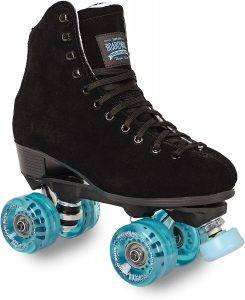
The Sure-Grip Boardwalk Outdoor Suede Roller Skates are a great choice for outdoor skating. The suede boots provide a comfortable fit and the adjustable trucks allow for easy manoeuvrability. These skates are perfect for cruising around your neighbourhood or hitting up your local park.
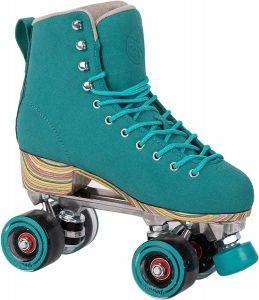
Luna Skates are known for their comfort and support. The boots are made with a soft, breathable material that moulds to your foot for a custom fit. The Luna Skates are great for indoor and outdoor skating and are a popular choice for roller derby skaters.
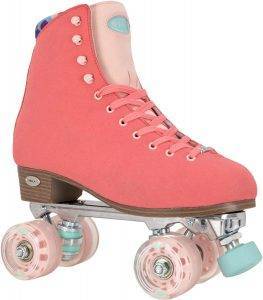
The VNLA Parfait Outdoor High-Top Roller Skate is designed for outdoor skating. The high-top boot provides ankle support and the adjustable trucks allow for easy turning. These skates are great for beginners and experienced skaters alike.
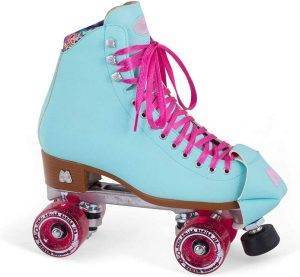
Moxi Skates’ Beach Bunny Roller Skates are a popular choice for outdoor cruising. The suede boots are comfortable and come in a range of fun colours. The skates are lightweight and easy to manoeuvre, making them perfect for beginners.
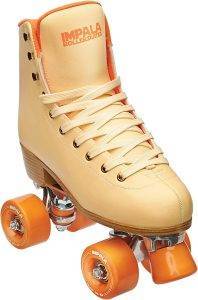
Impala’s Quad Skates are a great all-around skate. The boots are comfortable and provide good ankle support, and the wheels are suitable for indoor and outdoor skating. These skates are perfect for beginners who want a comfortable and versatile skate.
When choosing a roller skate, it’s important to consider your level of skating and the type of skating you’ll be doing. Make sure to choose a skate that fits well and provides the necessary support for your level of skating. With these comfortable roller skates, you’ll be ready to hit the rink or the streets with ease.
FAQ
How do I know if my rollerblades are adjustable?
Check with the manufacturer to ensure this is safe to do. There are some great online videos showing what adjustments can be made.
What type of padding should I buy for rollerblading?
There are a few different types of padding that you can buy, so be sure to do your research and find the right option for you. Some pads are designed specifically for the knees and elbows, while others offer full-body coverage. No matter what type of padding you choose, make sure that it is comfortable and fits well. You don’t want it to move around or bunch up while you’re skating.
What are some good stretches to do after skating?
Favourite stretches: Hamstring, reach for toes. Quadriceps, touch ankle. Calf, push down the front foot. Try the exercises in the video.

